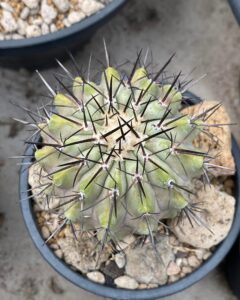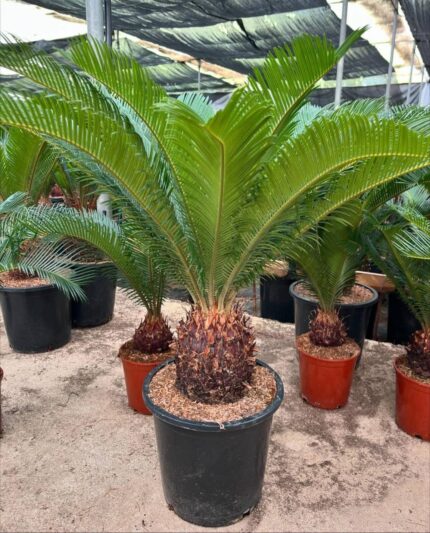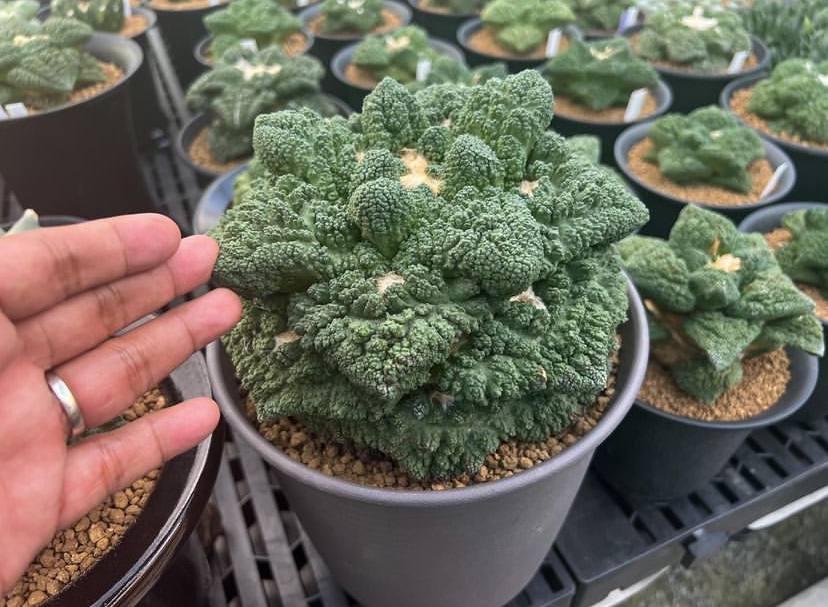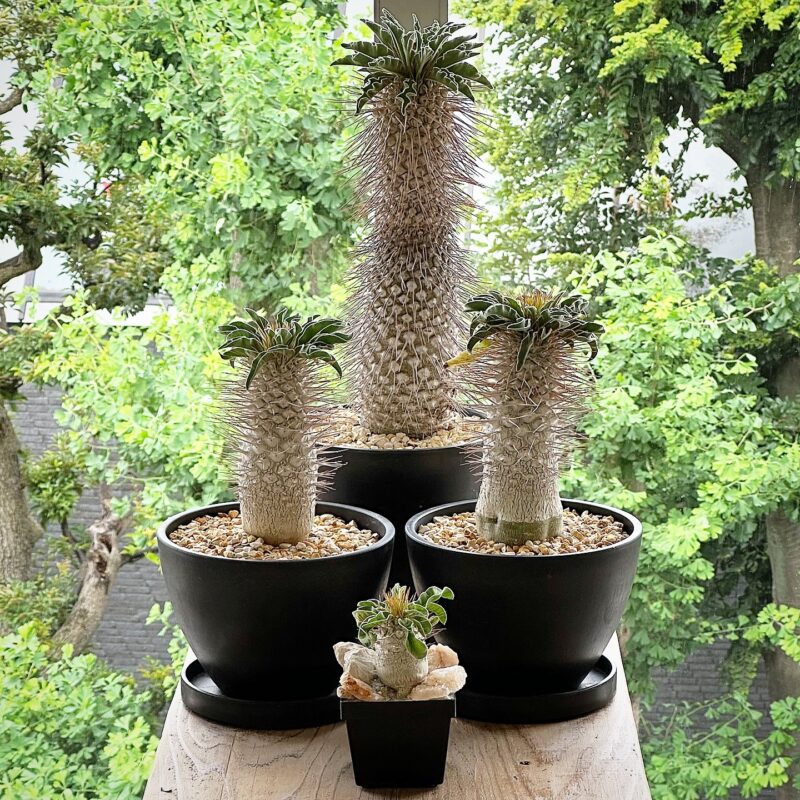Copiapoa cinerea

copiapoa cinerea
Copiapoa cinerea: A Comprehensive Guide to Cultivating and Caring for this Unique Cactus
Copiapoa cinerea is a striking and distinctive species of cactus that is native to the arid regions of Chile. Known for its slow growth and stunning appearance, this cactus has gained popularity among succulent and cactus enthusiasts worldwide. With its rounded, greyish-green body and intricate spination, Copiapoa cinerea adds a touch of elegance to any collection. In this comprehensive guide, we will explore everything you need to know about cultivating, caring for, and appreciating this unique cactus species. Order your beautiful plants at caudiciformplants.com
What is Copiapoa cinerea?
Copiapoa is a member of the Copiapoa genus, which belongs to the Cactaceae family. It is one of the more well-known species within the genus due to its distinctive appearance. Native to the coastal desert regions of northern Chile, Copiapoa cinerea thrives in harsh, dry environments with little rainfall. In its natural habitat, it can be found growing in rocky outcrops or sandy soils, often in coastal deserts where temperatures fluctuate dramatically between day and night. shop your plants here caudex
The Unique Appearance of Copiapoa cinerea
One of the main attractions of Copiapoa is its unique and attractive appearance. This cactus has a globular to slightly cylindrical shape and typically grows to a height of 20-30 cm, though some specimens can reach up to 50 cm in height. Its stem is a beautiful pale grey-green color, which gives it the name “cinerea” (meaning “ash-colored” in Latin). The spines of Copiapoa are another standout feature. They are generally golden-yellow or reddish-brown, and form intricate patterns that contrast with the greyish body of the cactus.Shop plants at caudex shop
The plant’s relatively slow growth rate contributes to its long lifespan, making it a rewarding cactus to cultivate. Its flowers, though not always easy to achieve in cultivation, are small, funnel-shaped, and range in color from yellow to orange or red, depending on environmental conditions and care.
Where Does Copiapoa cinerea Grow in the Wild?

copiapoa cinerea
Copiapoa is primarily found in the coastal regions of northern Chile, specifically in the Atacama Desert, one of the driest places on Earth. The cactus has adapted to the extreme conditions of this desert, where temperatures can soar during the day and drop significantly at night. Despite the low rainfall, the fog that rolls in from the Pacific Ocean provides moisture for many desert plants, including Copiapoa . In its natural habitat, it grows in rocky crevices or shallow soils that offer minimal water retention.Buy your plants from caudex shop:caudiciformplants.com
The harsh environment where Copiapoa cinerea thrives has made it a resilient and adaptable species, but it also means that it requires specific care to replicate its natural conditions when grown in other parts of the world.
Growing Copiapoa cinerea: Tips for Success
Growing Copiapoa cinerea requires understanding its natural habitat and replicating those conditions as closely as possible. The following tips will help you successfully cultivate this beautiful cactus in your own home or garden. Shop your plants at caudex
1. Choosing the Right Location
When growing Copiapoa it is essential to provide it with plenty of light. Ideally, place your cactus in a location where it receives full sunlight for several hours each day. However, it is important to note that this cactus is sensitive to too much direct sunlight during the hottest part of the day, especially in regions with intense sun. A bright, well-lit window sill or a spot with filtered sunlight is ideal. Shop plants at caudex shop
If growing Copiapoa outdoors, choose a location that mimics the plant’s native environment. Well-draining, slightly sandy soil with good air circulation will help the cactus thrive.
2. Soil and Drainage Needs
One of the most critical aspects of cultivating Copiapoa is ensuring that the soil drains well. In its natural habitat, this cactus grows in rocky, well-draining soils that don’t retain water for long. If you are planting Copiapoa cinerea in a pot, use a mix designed specifically for cacti and succulents. A good mix will contain sand, perlite, or pumice to improve drainage.Shop plants at caudexstore
If you are planting outdoors, ensure that the soil has good drainage by mixing in sand or small gravel to prevent water from accumulating around the roots.
3. Watering Copiapoa cinerea
Watering is one of the most important factors in the care of Copiapoa cinerea. This cactus is highly drought-tolerant and can survive extended periods without water. However, it should be watered thoroughly during the growing season, typically spring and summer. Allow the soil to dry out completely between waterings to prevent root rot, a common issue with cacti. During the winter months, reduce watering to once a month or less, as Copiapoa enters a dormancy period and requires little moisture.caudex shop Caudiciformplants.com
4. Temperature and Humidity Requirements
Copiapoa thrives in warm temperatures but is not tolerant of freezing conditions. It prefers temperatures between 20°C and 30°C (68°F to 86°F) during the growing season. While it can tolerate brief periods of heat, it is important to avoid excessive humidity, which can lead to fungal growth or root rot. When growing Copiapoa indoors, it is best to keep the plant in a dry environment with good air circulation.
If you live in a region that experiences cold winters, it’s recommended to bring your Copiapoa indoors during the colder months. A temperature of around 10°C (50°F) to 15°C (59°F) is ideal for winter dormancy.
5. Fertilizing Copiapoa cinerea
Like most cacti, Copiapoa benefits from occasional feeding, but it doesn’t require frequent fertilization. During the active growing season, a diluted cactus fertilizer can be applied every 4 to 6 weeks. Make sure to use a fertilizer that is low in nitrogen, as too much nitrogen can cause the cactus to grow too quickly and compromise its overall health. Avoid fertilizing during the winter months when the plant is in dormancy.
Propagating Copiapoa cinerea
Propagating Copiapoa from seeds or offsets is possible, but it requires patience and careful attention to detail. Growing from seed is the most common method of propagation for this species. Seeds of Copiapoa can be sown in a well-draining cactus mix. The seeds should be lightly covered with soil and kept in a warm, bright area. Ensure that the seeds stay moist, but not overly wet, until they germinate.
If you’re lucky enough to have a mature Copiapoa that produces offsets, you can propagate the cactus by carefully removing the offshoots with a sterilized knife and allowing the cut ends to callus over before planting them in a separate pot with well-draining soil.
Common Pests and Diseases of Copiapoa cinerea

copiapoa cinerea
While Copiapoa cinerea is relatively hardy, it can still be susceptible to a few pests and diseases. Mealybugs and aphids are common problems, as they are attracted to the moisture-rich tissues of the cactus. Regularly check your cactus for any signs of pest activity and treat infestations promptly with insecticidal soap or neem oil.
Root rot is another potential issue, especially if the cactus is watered too frequently or if the soil doesn’t drain properly. To avoid root rot, ensure that your Copiapoa cinerea is planted in well-draining soil and that the pot or container has drainage holes.
The Beauty of Copiapoa cinerea in Your Collection
Incorporating Copiapoa cinerea into your cactus or succulent collection brings not only an aesthetic value but also a sense of accomplishment due to its unique beauty and slow growth rate. This cactus is well-suited for collectors who appreciate its long lifespan, stunning appearance, and minimal care requirements once established. Whether grown in pots, rock gardens, or as part of a larger cactus display, Copiapoa is sure to be a conversation starter and a showstopper.
Conclusion: Why Choose Copiapoa cinerea for Your Garden?
Copiapoa is a stunning cactus species that will add a touch of elegance and resilience to any collection. Its unique, ash-colored body and intricate spines make it a striking addition to both indoor and outdoor spaces. Whether you’re a seasoned cactus grower or a beginner, Copiapoa offers a rewarding challenge and a sense of satisfaction when properly cared for. By following the guidelines outlined in this article, you can successfully grow and enjoy this fascinating species for many years to come. Buy plants at shop

























